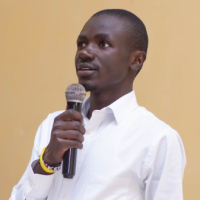
Time is nigh for a hastened disability inclusion through the Sustainable Development Goals (SDGs), which call to ‘Leave No One Behind’. Persons with disabilities have decried systemic and near deliberate exclusion without any of the SDG putting much attention into their affairs or aiming to address their wellbeing.
From “No Poverty” to “Partnerships for the goals”, I see a huge space to be seized to advance the wellbeing and the development of persons with disabilities in my community, country, continent and even the globe. A call is to be made for hopelessness to cease and for arrays of hope to jet in, for there’s more than meets the eye in this SDG trajectory. Digging deep into the SDG blueprint, I acknowledge its drafters for in all the goals there’s mention of their inclusive implementation through enumerated targets and indicators. This should grant all the stakeholders and players in this arena the authority to onboard persons with disabilities in the implementation of any of these SDGs, for they all touch on their life’s perspective in diverse measures.
The SDGs I’m most interested in are Quality Education (4), Decent work and Economic growth (8), Reduced Inequalities (10), Peace, Justice and strong institutions (16) and Partnerships (17). In this case I’ll focus on SDG 4 on Quality education. As a student and youth leader working on the wellbeing of students and youth with disabilities in my country, Kenya and leading a national student union bringing together students with disabilities within the universities and colleges. I have a deep interest in entrenching and crafting a framework aimed at galvanizing the prospects that are crucial in enabling the provision of inclusive education work for the advantage of all learners with disabilities. This is to be worked through a campaign named the #InclusionAgenda and #InclusiveHigherEducation4all, in an effort aimed at bringing together all stakeholders within the education sector and the other related domains. The aim is to tap into the potential of learners with disabilities within different discourses and chart a way forward in enabling their development and long-term empowerment.
I believe the era of empowering persons with disabilities through tools and tailoring materials is long gone. We must heighten the discussion in terms of enabling the education sector as a pivotal avenue in terms of addressing the needs championing its access to persons with disabilities without any hindrance posed to them arising because of their disabilities. Engagements must be made through the following chapters to aid in this avenue; resource provision, human capital facilitation, infrastructural accessibility, information and communication technological facilities integration and education financing which are the main facets that control this discourse. The SDG 4 related to quality education connected with SDG 10 on reducing inequalities, can be hampered and harmonized to foresee a fully coherent and inclusive educational domain that reduces the barriers these learners face within the educational ecosystem.
I’ve been vastly involved in the disability inclusion campaign within the university set-up in my country. Through the student union, I have been able to influence universities like Machakos University, St. Paul’s University and Pwani university which held their inaugural disability awareness days in an effort aimed at communicating to the wide university populace on the need to enable disability inclusion within and outside the university premises. This is a program that I endeavor to heighten within the higher educational institutions within the rural set-ups of our country and scale it to high schools to see improved transition rates for learners with disabilities within the education sector.
Joseph, 24, advocates for inclusive education in Kenya. He has a physical disability.


